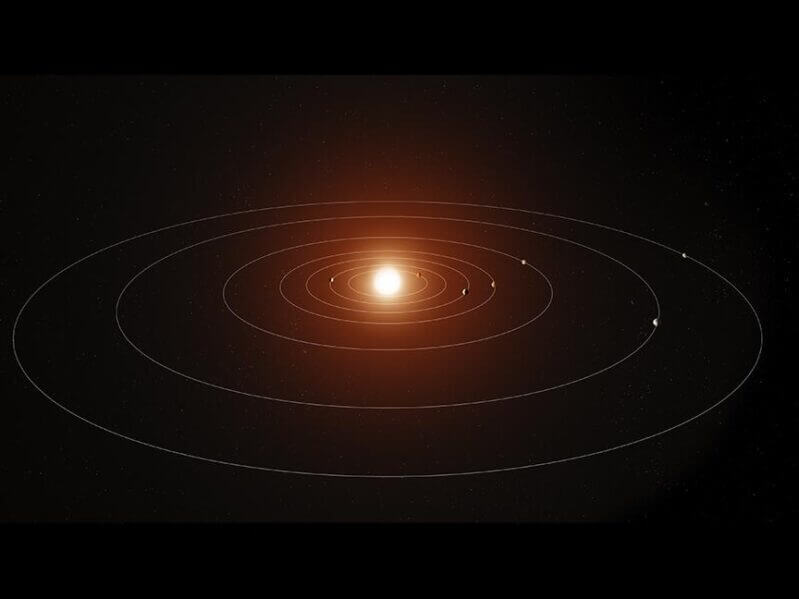Most near-Earth-sized planets travel around their host stars on nearly circular orbits, and the more small planets there are orbiting close to a star, the more nearly circular their orbits are. These are just two of many findings based on a major new analysis of data from NASA’s retired Kepler space telescope that focused on detailing exoplanet — planets beyond our solar system — characteristics. The new catalog includes almost 4,400 planets and strong planet candidates, which are still awaiting confirmation, and includes more than 700 systems with multiple planets.
A paper describing the new catalog, by a team of researchers that includes Penn State scientists, was made available online ahead of publication in The Planetary Science Journal.
“We’ve assembled the most accurate list of Kepler planet candidates and their properties to date,” said Jack Lissauer, a research scientist at NASA’s Ames Research Center in California’s Silicon Valley and lead author on the paper. “NASA’s Kepler mission has discovered the majority of known exoplanets, and this new catalog will enable astronomers to learn more about their characteristics. Among the new discoveries is Kepler-385, the first planetary system found to contain seven hot planets.”
Kepler discovered planets by detecting tiny dips in the brightness of stars as planets pass between the star and the telescope, blocking a fraction of the star’s light. While the final official catalog of planets from the Kepler mission was designed to help measure how common planets are around other sun-like stars, this study provided two versions of the catalog: one focusing on producing the most accurate information about each of the systems and another optimized for characterizing the distribution of planet sizes, orbital periods and orbital shapes.
The new catalog uses improved measurements of stellar properties. It also accounts for the gravitational interactions between planets within a planetary system to more accurately calculate the path of each planet transiting across its host star. This combination illustrated that stars hosting several transiting planets — planets passing in front of the body of the star — typically have more circular orbits than stars with only one or two transiting planets.
Penn State Distinguished Professor of Astronomy and Astrophysics Eric Ford led the analysis of the observed distribution of transit durations. Ford explained that transit durations are a powerful probe of the distribution of exoplanets’ orbital eccentricities. These are a measurement of how far a planet’s orbital shape is from being a perfect circle, which equates to an eccentricity of zero, while more elongated orbits have higher eccentricities. For most planets, there aren’t enough data to measure their orbital eccentricity on an individual basis. Ford’s research group, as far back as 2008, developed methods to characterize the distribution of eccentricities for a population of transiting planets. Early attempts to characterize the shapes of planet’s orbits were limited by uncertainties in the properties of their host stars and approximations used to construct previous catalogs.
“While previous studies had inferred that small planets and systems with more transiting planets tend to have smaller orbital eccentricities, those results relied on complex models,” said Ford, who is a co-hire of the Penn State Institute for Computational and Data Sciences. “Our new result is a more direct and model-independent demonstration that systems with more transiting planets have more circular orbits.”
Most of the planets discovered by NASA’s Kepler mission are closer to their star than the Earth is to the sun and expected to be too warm to be habitable. Only a small fraction of Kepler’s discoveries are in the “habitable zone,” the region where they could support liquid water on their surface — a concept introduced by Penn State Evan Pugh Professor Emeritus James Kastings. Nevertheless, the warm super-sized Earths provide intriguing clues about the climate of planets in the habitable zone.
“Astronomers have discovered some giant planets with moderate- to extremely-elongated orbits, resulting in brief, hot summers and long winters to cool off,” Ford said. “Smaller, rocky planets with large eccentricities would have extreme seasonal variations that could be challenging for the development of life. In contrast, Kepler data demonstrate that the vast majority of planets with sizes between that of Earth and Neptune typically have nearly circular orbits. For these planets, seasonal climate variations will be primarily due to the tilt of the planet’s rotation axis, as on Earth.”
Kepler’s primary observations ceased in 2013 and were followed by the telescope’s extended mission, called K2, which continued until 2018. The data Kepler collected continues to reveal new discoveries about our galaxy. Ford and collaborators previously found there are more planets than stars in the Milky Way galaxy, and now, this new study paints a more detailed picture of what each of those planets and their home systems look like — providing a better view of the many worlds beyond our solar system.
“Thanks to the Kepler mission, we now know that the typical sun-like star harbors multiple planets larger than Earth but smaller than Neptune, orbiting even closer together than the planets in our solar system,” Ford said. “The observation means solar systems very similar to own are not typical. But still we don’t know if they’re rare.”
In addition to Lissauer and Ford, the research team includes Kadri M. Nizam, a graduate student at Penn State, Jason F. Rowe at Bishops University in Canada, Daniel Jontof-Hutter at the University of the Pacific in California, Daniel C. Fabrycky at the University of Chicago, Darin Ragozzine at Brigham Young University and Jason H. Steffen at the University of Nevada Las Vegas.
The NASA Kepler Participating Scientist Program Cycle and a NASA Origins of Solar Systems grant supported Ford’s work on this project. He is the director of the Center for Exoplanets and Habitable Worlds, which is supported by Penn State and the Eberly College of Science, an associate director of the Center for Astrostatistics, and a member of the Institute for Computational and Data Sciences and the Consortium for Planetary and Exoplanetary Science and Technology.

